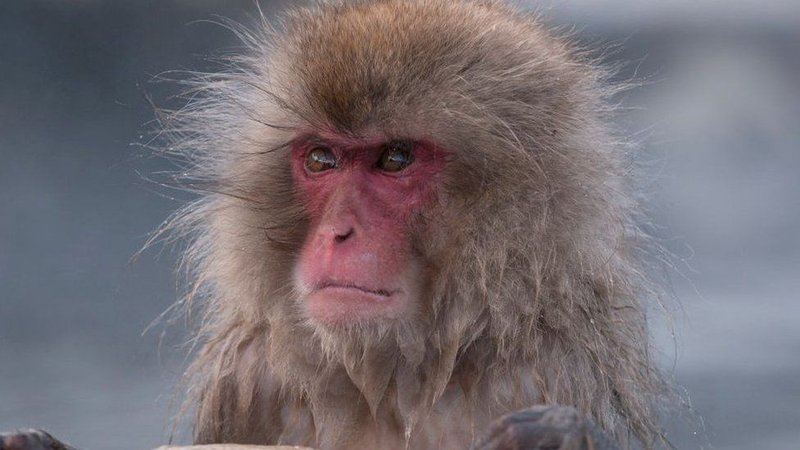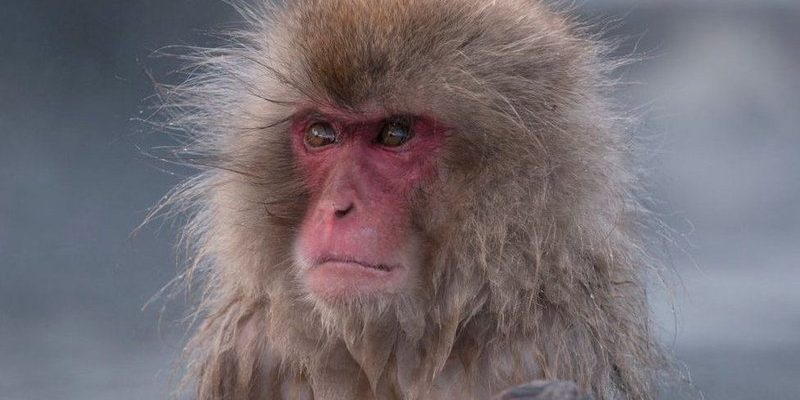
The Japanese Macaque, often affectionately called the “snow monkey,” is a fascinating primate that captures our imagination. Imagine a furry little creature, with a round face and expressive eyes, braving the frigid temperatures of Japan’s mountainous regions. These monkeys are not just adorable; they have remarkable behaviors and social structures that make them stand out in the animal kingdom. From soaking in hot springs to their unique grooming habits, Japanese Macaques offer a glimpse into the rich tapestry of wildlife.
You might be wondering what makes the Japanese Macaque so special. Well, for starters, they are the northernmost living non-human primates, adapted to live in cold climates where temperatures can drop well below freezing. This resilience sets them apart from their tropical cousins. Additionally, their social groups, consisting of strong matriarchal hierarchies and playful antics, provide a lively insight into their daily lives. Whether you’re an animal lover or just curious, let’s explore the many facets of the Japanese Macaque together!
Physical Characteristics
When you first spot a Japanese Macaque, their distinct features catch your eye. These primates have thick fur, which is typically a grayish-brown color, providing insulation against the cold. Adult males usually weigh between 40 to 60 pounds, while females are smaller, averaging around 30 to 50 pounds. Their bodies are sturdy, with strong limbs that help them navigate their rocky habitats.
One of the most charming aspects of their appearance is their expressive faces. They have a short muzzle, bright eyes, and pronounced cheek pouches, which they use to store food. The facial expressions of Japanese Macaques are quite telling; their furrowed brows and playful smiles can easily convey emotions, whether they’re content, curious, or wary of a potential threat.
Their tails are relatively short compared to some other primates, often appearing stumpy. This feature doesn’t hinder their agility; Japanese Macaques are excellent climbers and can navigate the steep terrain of their mountainous homes with ease. Overall, their physical adaptations not only help them survive in harsh conditions but also endear them to those who admire them from afar.
Habitat and Distribution
The Japanese Macaque is primarily found on the islands of Honshu, Shikoku, and Kyushu in Japan. They thrive in a variety of habitats, from subtropical forests to snowy mountains. Their ability to inhabit diverse environments is quite remarkable; in fact, the Japanese Macaque lives at elevations of up to 3,000 meters (about 9,800 feet). This adaptability is key to their survival.
During the winter months, these monkeys often descend to lower altitudes where food is more accessible. They can be seen foraging for roots, fruits, and the occasional insect. In regions like Jigokudani, famous for its hot springs, these monkeys have developed the delightful habit of soaking in the warm waters to keep warm during chilly winters. Imagine a group of monkeys relaxing in the steam—it’s a sight that attracts tourists and wildlife enthusiasts alike!
In the warmer months, however, they move back up the mountains to enjoy their natural habitat. This seasonal migration helps them to avoid harsh weather while ensuring a steady food supply throughout the year. Their ability to adapt to different environments speaks volumes about their resilience and intelligence.
Behavior and Social Structure
Japanese Macaques are social animals known for their complex social structures. Living in groups called troops, these primates can number anywhere from a few dozen to over a hundred individuals. The troops are matriarchal, meaning females typically lead the group. They maintain strong bonds through grooming, a behavior that not only keeps their coats clean but also strengthens social ties.
In these troops, you’ll find a wide range of relationships, ranging from the nurturing of young monkeys to the playful banter between peers. A mother will care for her infant closely, teaching it vital skills for survival. The hierarchy plays a crucial role; higher-ranking females have better access to food and resources, while lower-ranking individuals must navigate their place with care.
One interesting behavior observed in Japanese Macaques is their use of tools. For example, they have been seen using stones to crack open nuts. This intelligence reflects not only their adaptability but also their capacity for problem-solving. So, when you think of monkeys, consider their intricate social lives and clever behaviors—there’s so much more beneath the surface!
Diet and Feeding Habits
Japanese Macaques are omnivorous, which means they have a varied diet. They primarily eat fruits, nuts, seeds, and roots, supplemented by insects and small animals. Their ability to forage effectively is impressive; they often use their keen sense of smell to locate food buried under snow or foliage.
In winter, their diet shifts significantly. With many food sources scarce, they rely on bark, leaves, and tree roots to sustain themselves. Troops may also forage together, sharing food and often displaying fascinating group dynamics. You might catch a glimpse of them engaging in playful competition over a particularly tasty morsel.
Interestingly, Japanese Macaques have also been observed washing their food, especially in regions where they have learned to use water sources. This behavior reflects their intelligence and adaptability. They’re not just foragers; they’re clever problem-solvers who have learned to navigate their world with finesse.
Reproduction and Life Cycle
The reproduction of Japanese Macaques is a significant aspect of their social structure. Mating typically occurs during the winter months, leading to births in spring when resources are more abundant. Females have a gestation period of about six months, after which they usually give birth to a single infant. These youngsters are incredibly vulnerable at birth, so mothers tend to be very protective.
Infants are born with a light-colored coat that gradually darkens as they grow. They cling to their mothers for safety and nourishment, spending most of their early days learning about their environment and social interactions within the troop. As they mature, the youngsters begin to play with their peers, mimicking adult behaviors, which is crucial for their development.
By the time they reach adolescence, they’re ready to navigate the complexities of troop life. This learning phase is filled with challenges, but it’s essential for their survival as they prepare to assume their role in the social hierarchy. The life of a Japanese Macaque is rich with learning opportunities, from foraging skills to understanding social dynamics.
Conservation Status
Currently, the Japanese Macaque is listed as “Least Concern” on the IUCN Red List. This classification reflects their relatively stable populations, especially compared to other primate species. However, that doesn’t mean they are free from threats. Habitat destruction due to urban development, agriculture, and climate change poses significant risks to their natural environments.
In some areas, tourism plays a double-edged sword. While it can provide resources for conservation, increased human interaction can disrupt their natural behaviors. Conservation efforts are critical to ensuring that these remarkable animals continue to thrive in their natural habitats, and many organizations are working diligently to protect their ecosystems.
Community awareness and education play essential roles in conservation. As people learn more about the Japanese Macaque and their needs, they become more motivated to help protect their environments. Supporting national parks and wildlife sanctuaries is a way to contribute to the greater good of these charming primates.
Interesting Facts
| Scientific Name: | Macaca fuscata |
| Average Lifespan: | About 22 years in the wild; up to 30 years in captivity |
| Size: | 18-30 inches in length |
| Weight: | Females: 30-50 pounds; Males: 40-60 pounds |
| Habitat: | Forests, mountains, and hot spring areas |
| Diet: | Omnivorous: fruits, nuts, roots, insects |
FAQ
What is the Japanese Macaque known for?
The Japanese Macaque is primarily known for its adaptability to cold climates and its unique behaviors, such as soaking in hot springs during winter. Their social structures and grooming habits are also standout features, showcasing their intelligence and social dynamics. They are indeed fascinating creatures that reflect the complexities of primate life.
Where do Japanese Macaques live?
These monkeys primarily inhabit the islands of Honshu, Shikoku, and Kyushu in Japan. They can be found in various environments, from subtropical forests to snowy mountains. Their ability to thrive in different habitats, including areas with hot springs, adds to their intrigue.
How do Japanese Macaques stay warm in winter?
Japanese Macaques have thick fur that helps insulate them against cold temperatures. They often descend to lower altitudes to find food but are famous for their behavior of soaking in hot springs during the winter months, which keeps them warm and serves as a social activity.
What do Japanese Macaques eat?
These monkeys are omnivorous, feeding on a varied diet that includes fruits, nuts, seeds, and insects. In winter, they adapt their diet to include bark and tree roots when other food sources are scarce, showcasing their resourcefulness in finding sustenance.
How long do Japanese Macaques live?
In the wild, Japanese Macaques typically live around 22 years, while those in captivity can live up to 30 years. Various factors, such as habitat quality and social structure, can influence their lifespan significantly.
Are Japanese Macaques social animals?
Yes, Japanese Macaques are highly social creatures. They live in large troops with strong matriarchal hierarchies, engaging in grooming and other social behaviors that strengthen group bonds. Their social interactions play a vital role in their survival and well-being.
What threats do Japanese Macaques face?
While currently listed as “Least Concern,” Japanese Macaques face threats from habitat destruction due to urbanization and industrial activities, as well as climatic changes affecting their environments. Effective conservation efforts are necessary to protect their populations and habitats.
Can Japanese Macaques use tools?
Yes! Japanese Macaques have been observed using stones to crack open nuts, demonstrating their intelligence and problem-solving skills. This ability adds to the understanding of their cognitive capabilities and adaptability in the wild.
How do Japanese Macaques communicate?
These monkeys have a variety of vocalizations, body language, and facial expressions to communicate with one another. Their social interactions, such as grooming and displaying emotions, help convey messages and establish social bonds within the troop.
Can Japanese Macaques be kept as pets?
Keeping Japanese Macaques as pets is not advisable. They are wild animals with complex social needs and behavioral patterns that are difficult to replicate in a domestic setting. Additionally, they may develop behavioral problems due to lack of social interaction and stimulation, making them unsuitable as household pets.

